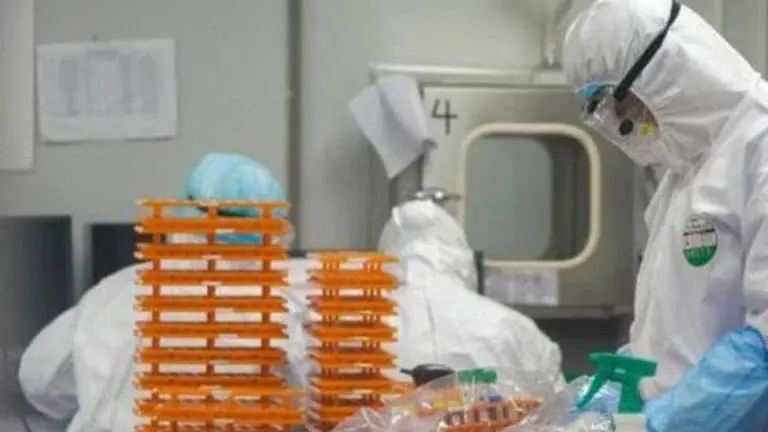Updated 8 September 2020 at 07:25 IST
COVID-19: Patients suffering from lung, heart damage can improve with time, says study
COVID-19 patients might develop a tendency to go through long-term lung and heart damage. However, it can be improved with time, says a recent study.
- Science News
- 4 min read

Patients who are severely infected by the novel coronavirus might develop a tendency to go through long-term lung and heart damage. However, for many patients this tendency might improve over time, says a study presented at the European Respiratory Society International Congress. Researchers in the Tyrolean region of Austria observed various patients affected by the novel coronavirus. The patients were hospitalised at the University Clinic of Internal Medicine in Innsbruck and the St Vinzenz Hospital in Zams or the cardio-pulmonary rehabilitation centre in Munster, Austria
The new revelation
The study suggests that over 150 patients who were a part of the research were asked to return after 6, 12 and 24 weeks of their discharge from hospital for the purpose of evaluation. According to the study, at the time of the first visit, all the patients had the problem of breathlessness and coughing. Also, CT scans reported lung damage in 88 per cent of patients. However, by the second visit, the percentage had come down to 56 per cent. Dr Sabina Sahanic, who is a clinical PhD student at the University Clinic in Innsbruck and part of the team that carried out the study said, “The bad news is that people show lung impairment from COVID-19 weeks after discharge; the good news is that the impairment tends to ameliorate over time, which suggests the lungs have a mechanism for repairing themselves”.
The study also included Associate Professor Ivan Tancevski, Professor Judith Loffler-Ragg and Dr Thomas Sonnweber in Innsbruck. As a part of the study, during the visit of the patients, clinical examinations, laboratory tests, analysis of the amounts of oxygen and carbon dioxide in arterial blood, lung function tests, computed tomography scans and echocardiograms were carried out on them. According to the study, the results of the CT scan showed that lung damage decreased from 8 points at 6 weeks to 4 points at 12 weeks.
Advertisement
Dr. Sahanic said, “We do not believe left ventricular diastolic dysfunction is specific to COVID-19, but more a sign of the severity of the disease in general. Fortunately, in the Innsbruck cohort, we did not observe any severe coronavirus-associated heart dysfunction in the post-acute phase. The diastolic dysfunction that we observed also tended to improve with time”. She concluded by saying, “The findings from this study show the importance of implementing structured follow-up care for patients with severe COVID-19 infection. Importantly, CT unveiled lung damage in this patient group that was not identified by lung function tests. Knowing how patients have been affected long-term by the coronavirus might enable symptoms and lung damage to be treated much earlier and might have a significant impact on further medical recommendations and advice”.
Advertisement
As a part of the study, it was also suggested that a pulmonary rehabilitation programme could be beneficial for patients who were coming off ventilators. Ms Yara Al Chikhanie, a PhD student at the Dieulefit Sante clinic for pulmonary rehabilitation and the Hp2 Lab at the Grenoble Alps University, France, used a walking test to evaluate the weekly progress of 19 patients. All these patients had spent an average time of 3 weeks on the Intensive Care Unit. These patients had also spent 2 weeks in a pulmonary ward before being transferred to the Dieulefit Sante clinic for pulmonary rehabilitation. It was observed that most of these people were still unable to walk and therefore they had to spend 3 weeks at the rehabilitation. The test observed how far the patients could walk and it was observed that initially, they were able to walk an average of 16 per cent of the distance that they should have walked normally if they were healthy. However, this came up to 43 per cent after 3 weeks of pulmonary rehabilitation. Ms Al Chikhanie said, “These findings suggest that doctors should start rehabilitation as soon as possible, that patients should try to spend as little time as possible being inactive and that they should enrol with motivation in the pulmonary rehabilitation programme. If their doctors judge it to be safe, patients should start physical therapy exercises while still in the hospital’s pulmonary ward”.
(With inputs from ANI)
(Image Credits: PTI)
Published By : Akanksha Arora
Published On: 8 September 2020 at 07:25 IST
